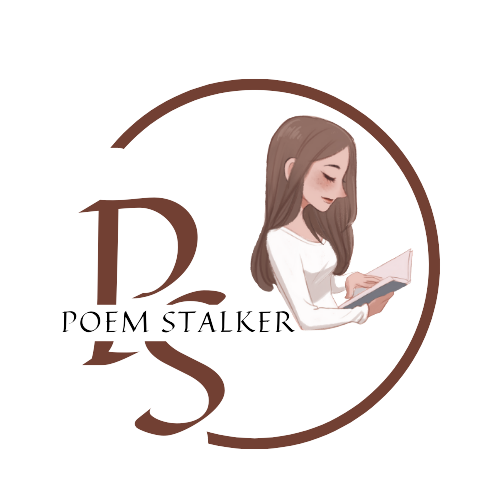Poetic form refers to the structure, style, and organization of a poem. It encompasses various elements such as rhyme scheme, meter, line length, stanza structure, and overall layout. Poets use different forms to shape their poems and convey their ideas and emotions effectively.
Here are some common elements of poetic form:
1.Sonnet poetic form
A sonnet is a specific form of poetry that traditionally consists of 14 lines, typically written in iambic pentameter. Iambic pentameter is a rhythmic pattern in which each line has ten syllables, with emphasis on every second syllable. Sonnets are known for their structured rhyme schemes and are often used to explore themes of love, beauty, time, and human emotions.
There are several types of sonnets, but the most well-known are the Shakespearean (or English) sonnet and the Petrarchan (or Italian) sonnet.
- Shakespearean Sonnet: This type of sonnet is composed of three quatrains (four-line stanzas) followed by a final rhymed couplet (two-line stanza). The rhyme scheme is typically ABABCDCDEFEFGG. William Shakespeare is one of the most famous poets associated with this form, and his collection of sonnets follows this structure.
- Petrarchan Sonnet: Named after the Italian poet Petrarch, this type of sonnet consists of an octave (eight-line stanza) followed by a sestet (six-line stanza). The octave often presents a problem or theme, and the sestet provides a resolution or commentary. The rhyme scheme can vary; it’s commonly ABBAABBACDCDCD or ABBAABBACDECDE.
Sonnets are known for their ability to convey complex emotions and ideas within the confines of their structure. They require careful consideration of rhyme, meter, and the interplay of themes and imagery. Many poets throughout history have used sonnets to explore the depths of human experiences and express their thoughts in a poetic and structured manner.
EXAMPLE
Shakespearean Sonnet (Sonnet 18 by William Shakespeare)
Shall I compare thee to a summer’s day?
Thou art more lovely and more temperate:
Rough winds do shake the darling buds of May,
And summer’s lease hath all too short a date:
Sometime too hot the eye of heaven shines,
And often is his gold complexion dimmed;
And every fair from fair sometime declines,
By chance, or nature’s changing course, untrimmed;
But thy eternal summer shall not fade
Nor lose possession of that fair thou ow’st;
Nor shall Death brag thou wanderest in his shade,
When in eternal lines to time thou grow’st;
So long as men can breathe or eyes can see,
So long lives this, and this gives life to thee.
Petrarchan Sonnet (Sonnet 292 by Francesco Petrarch)
The eyes that fed my heart have shut their light,
And I am left a prey to endless night.
Whence shall I find a solace for my pain,
When he who cured my wrongs is gone from sight?
All the clear fountains from whose source so bright
My fainting soul drank life, have ceased to flow.
And what will more my joy in life bestow,
Now that the chief of them is torn away?
Woe’s me, that for a few sweet looks of yore
My hope in this vain world should fixed be so!
When the last sunbeam sets, and all the skies
Are lost in shadow, one small beacon-glow
Will tell how far, in what dark solitude,
My pathless journey I must haply wend.
2.Haiku poetic form
A haiku is a traditional form of Japanese poetry known for its simplicity and focus on nature. It consists of three lines with a specific syllable pattern: 5 syllables in the first line, 7 syllables in the second line, and 5 syllables in the third line. Haikus often capture a moment of emotion, reflection, or observation, emphasizing the beauty and transience of the natural world.
EXAMPLE
An old silent pond…
A frog jumps into the pond—
Splash! Silence again.
– Matsuo Bashō
In this haiku by Matsuo Bashō, you can see how it captures a single moment in nature, emphasizing the stillness before the frog’s splash disrupts the silence of the pond.
The form’s brevity and focused imagery challenge poets to convey depth and meaning within a constrained structure. While traditionally rooted in nature themes, contemporary haikus can also explore a wider range of subjects and emotions while maintaining the form’s concise structure.
3.Limerick poetic form
A limerick is a light-hearted and humorous form of poetry known for its distinctive rhyme scheme and rhythm. Limericks consist of five lines, with a specific pattern of AABBA rhyming. The first, second, and fifth lines are typically longer and have three metrical feet, while the third and fourth lines are shorter and have two metrical feet. Limericks often play with language and contain clever wordplay or unexpected twists.
EXAMPLE
There once was a man from Peru,
Who dreamt he was eating his shoe.
He awoke with a fright,
In the middle of the night,
To find that his dream had come true!
In this limerick, you can see the AABBA rhyme scheme and the playful tone. Limericks are often used to tell humorous stories or share witty observations in a concise and rhythmic manner.
4.Villanelle poetic form
A villanelle is a highly structured poetic form that consists of 19 lines divided into five tercets (three-line stanzas) followed by a final quatrain (four-line stanza). Villanelles are known for their specific rhyme scheme and repeating lines, which give them a distinctive and memorable quality. The most famous example of a villanelle is “Do not go gentle into that good night” by Dylan Thomas.
The rhyme scheme of a villanelle is as follows:
- The first and third lines of the poem alternate as the final line of each subsequent tercet.
- The first and third lines also form the final two lines of the poem, in that order.
In addition to this rhyme scheme, the first and third lines are repeated throughout the poem, creating a powerful and hypnotic effect.
EXAMPLE
Dylan Thomas’ “Do not go gentle into that good night
Do not go gentle into that good night,
Old age should burn and rave at close of day;
Rage, rage against the dying of the light.
Though wise men at their end know dark is right,
Because their words had forked no lightning they
Do not go gentle into that good night.
Good men, the last wave by, crying how bright
Their frail deeds might have danced in a green bay,
Rage, rage against the dying of the light.
Wild men who caught and sang the sun in flight,
And learn, too late, they grieved it on its way,
Do not go gentle into that good night.
Grave men, near death, who see with blinding sight
Blind eyes could blaze like meteors and be gay,
Rage, rage against the dying of the light.
And you, my father, there on that sad height,
Curse, bless, me now with your fierce tears, I pray.
Do not go gentle into that good night.
Rage, rage against the dying of the light.
5.Sestina poetic form
A sestina is a complex and structured form of poetry that consists of six stanzas, each with six lines, followed by a three-line stanza called an envoi. What makes the sestina unique is its intricate pattern of word repetition. In a sestina, the end words of the lines in the first stanza are used in a specific order to end the lines in the subsequent stanzas.
This pattern continues, creating a cyclical and intricate structure. The end-word order in the first stanza is as follows: ABCDEF. In the second stanza: FAEBDC. In the third stanza: CFDABE. In the fourth stanza: ECBFAD.
In the fifth stanza: DEACFB. In the sixth stanza: BDFECA. The envoi is usually composed of three lines and includes three of the end words, with one at the end of each line and the other two embedded within.
Sestinas can be challenging to compose due to the constraints of the repeated end-word pattern. However, they can result in highly creative and intricate poems that require careful planning and attention to detail.
EXAMPLE
“Sestina” by Algernon Charles Swinburne
Strange wind, wild wind, windy month of May,
Wind whose hand takes every dream in hand,
Wind that binds buds fast with soft green bands,
Wind that bears down the flower and makes it away,
Wind that is blown on with all the world’s desire,
Wind that is blown from all the warm south-west,
Wind that brings back to us our bitterest best.
In this excerpt, you can see the end-word pattern (ABCDEF) that will be used throughout the poem. Each stanza will reuse the end words of the previous stanza in the order dictated by the pattern. This creates a challenging but rewarding form for both readers and poets.

SOME FACTS ABOUT POETIC FORM
Poetic form refers to the structure, style, and organization of a poem. It includes elements such as rhyme, meter, line length, stanza structure, and more. Here are some facts about poetic form:
- Rhyme: Rhyme is the repetition of similar sounds at the end of lines in a poem. Common types of rhyme include perfect rhyme (e.g., cat/hat) and slant rhyme (e.g., time/line), which is when the sounds are similar but not identical.
- Meter: Meter is the rhythmic pattern of stressed and unstressed syllables in a line of poetry. Common meters include iambic pentameter (five pairs of alternating unstressed and stressed syllables per line) and trochaic tetrameter (four pairs of stressed and unstressed syllables per line).
- Stanza: A stanza is a group of lines within a poem that function like a paragraph in prose. The number of lines and their arrangement in a stanza can vary, with common forms including couplets (two lines), quatrains (four lines), and sonnets (typically 14 lines).
- Free Verse: Free verse is a type of poetry that does not adhere to a specific rhyme or meter pattern. Instead, it relies on the natural rhythms of language and the poet’s artistic expression.
- Sonnet: A sonnet is a 14-line poem with a specific rhyme scheme and meter. Two common types are the Shakespearean (or English) sonnet and the Petrarchan (or Italian) sonnet, each with its own rhyme and stanza structure.
- Haiku: Haiku is a traditional Japanese form of poetry consisting of three lines with a syllable pattern of 5-7-5. Haikus often focus on nature and evoke a sense of Zen-like simplicity.
- Limerick: Limericks are humorous poems consisting of five lines with a specific rhyme and meter (anapestic trimeter). They are known for their light-hearted and often nonsensical content.
- Ballad: Ballads are narrative poems that often tell a story. They typically have a simple rhyme scheme and are written in quatrains with alternating lines of iambic tetrameter and iambic trimeter.
- Ode: An ode is a formal, often lyrical poem that addresses a particular subject with reverence and praise. Odes can vary in structure and style but often employ a consistent stanza pattern.
- Villanelle: A villanelle is a 19-line poem with a specific rhyme scheme and repeating lines. It consists of five tercets (three-line stanzas) followed by a quatrain (four-line stanza). The first and third lines of the first tercet are alternately repeated as the last lines of the subsequent tercets and together as the final two lines of the poem.
- Acrostic: An acrostic poem uses the first letters of a word or phrase to form a message or word vertically when read from top to bottom. It can add a hidden layer of meaning to the poem.
- Pantoum: A pantoum is a structured form of poetry where each line of a stanza is repeated in a specific pattern in the following stanza, creating a cascading effect. The final line of the poem often repeats the first line.
Poetic form can greatly influence the mood, tone, and impact of a poem. Poets often choose specific forms to enhance their creative expression and convey their messages effectively.

SOME MORAL VALUE OF POETIC FORM
Poetic form can convey and promote various moral values and lessons through the power of language, imagery, and storytelling. Here are some moral values associated with poetic form:
- Empathy: Poetic form allows poets to delve into the experiences and emotions of others, fostering empathy by helping readers connect with different perspectives, cultures, and life situations.
- Beauty: Many poems emphasize the beauty of nature, art, and human experiences. This appreciation of beauty encourages people to find and celebrate the beauty in everyday life, which can lead to a greater sense of gratitude and contentment.
- Reflection: Poetry often encourages self-reflection and introspection. It prompts readers to ponder life’s complexities, their own actions, and the consequences of their choices, promoting self-awareness and personal growth.
- Empowerment: Poetic form can inspire and empower readers. Poems often feature characters or speakers who overcome challenges, face adversity, or express resilience, encouraging readers to do the same in their lives.
- Unity: Poetry has the power to unite people across cultures, generations, and backgrounds. Shared experiences and emotions expressed through poetry can foster a sense of community and solidarity, emphasizing the common humanity that binds us.
- Compassion: Many poems explore themes of suffering, loss, and hardship, which can evoke feelings of compassion and a desire to alleviate the suffering of others. Poetic form can be a call to action for social justice and humanitarian efforts.
- Tolerance: Poetry often celebrates diversity and differences. It encourages readers to accept and appreciate people with varying backgrounds, perspectives, and beliefs, fostering a more tolerant and inclusive society.
- Morality: Poems frequently explore ethical dilemmas and moral choices, prompting readers to consider the consequences of their actions and to make ethical decisions in their own lives.
- Hope: Even in the face of adversity, many poems convey a message of hope and optimism. They remind readers that, despite challenges, there is potential for positive change and a brighter future.
- Preservation of Culture: Poetry often serves as a vessel for preserving cultural traditions, stories, and values. It can pass down the wisdom and moral teachings of one generation to the next, ensuring continuity and cultural richness.
- Environmental Awareness: Some poems focus on the beauty of the natural world and the importance of environmental conservation. They can inspire readers to appreciate and protect the environment, promoting ecological responsibility.
- Self-Expression: Encouraging self-expression through poetry can promote authenticity and personal growth. It teaches individuals to express their thoughts, emotions, and values in creative and constructive ways.
In essence, poetic form serves as a vehicle for the expression and transmission of moral and ethical values. Through its artistry and emotional depth, poetry can inspire readers to contemplate, internalize, and act upon these values, contributing to personal and societal growth.

Life with poetic form
Living a life with a deep appreciation for and engagement with poetic form can be a rich and rewarding experience. Here are some ways in which poetry and poetic form can enhance one’s life:
- Enhanced Language Skills: Engaging with poetry on a regular basis can improve your language skills, including vocabulary, syntax, and figurative language. It encourages a deeper understanding of words and their nuances.
- Emotional Expression: Poetry allows you to express your emotions in a creative and cathartic way. Writing and reading poems can be a therapeutic outlet for processing feelings and experiences.
- Creative Outlet: Poetic form provides a structured but flexible canvas for creativity. Whether you’re writing poems, experimenting with different forms, or crafting metaphors, it allows you to explore your artistic side.
- Mindfulness and Reflection: Poetry often requires careful observation of the world and self-reflection. It can cultivate mindfulness, encouraging you to pay attention to the details of life and your inner thoughts and feelings.
- Empathy and Understanding: Reading poetry from diverse voices and backgrounds can expand your empathy and understanding of the human experience. It exposes you to different perspectives and cultures, fostering a broader worldview.
- Connection to History and Tradition: Poetry has a long and rich history in various cultures. Engaging with poetic forms can connect you to literary traditions and the wisdom of previous generations.
- Communication Skills: Poetry hones your ability to communicate effectively. Writing poems forces you to convey complex ideas and emotions concisely and powerfully.
- Aesthetic Appreciation: Poetic form encourages an appreciation for aesthetics, including the beauty of language, rhythm, and imagery. It can help you find beauty in everyday life.
- Catharsis and Healing: Many people find solace and healing in writing and reading poetry. It provides an outlet for processing grief, trauma, and other challenging life experiences.
- Community and Connection: Engaging with poetry can connect you with a community of fellow poets and poetry enthusiasts. Sharing your work and discussing poems with others can be a source of support and camaraderie.
- Intellectual Stimulation: Analyzing and interpreting poetry can be intellectually stimulating. It encourages critical thinking, interpretation, and the exploration of layers of meaning.
- Inspiration: Poetry can serve as a wellspring of inspiration for other creative endeavors, such as music, visual arts, and storytelling. It can fuel your imagination and lead to innovative ideas.
- Spiritual and Philosophical Exploration: Many poems delve into deep philosophical and spiritual questions. Reading and writing poetry can be a means of exploring existential and metaphysical themes.
- Legacy and Impact: Poetry has the potential to leave a lasting impact on readers and society. Your poems, if shared, can become part of your legacy, touching the lives of others even after you’re gone.
Incorporating poetic form into your life can provide a deeper connection to language, emotions, and the human experience. It encourages self-expression, empathy, and creativity, enriching your life in profound ways. Whether you’re a writer, reader, or both, poetry can be a lifelong companion on your journey.
- How may I help further? let me know in down comments. Easy with www.poemstalker.com
- Want to know amazing facts about history Read now
POETIC FORM POETIC FORM POETIC FORM POETIC FORM POETIC FORM
POETIC FROM 6-10
POETIC FROM 11-15

